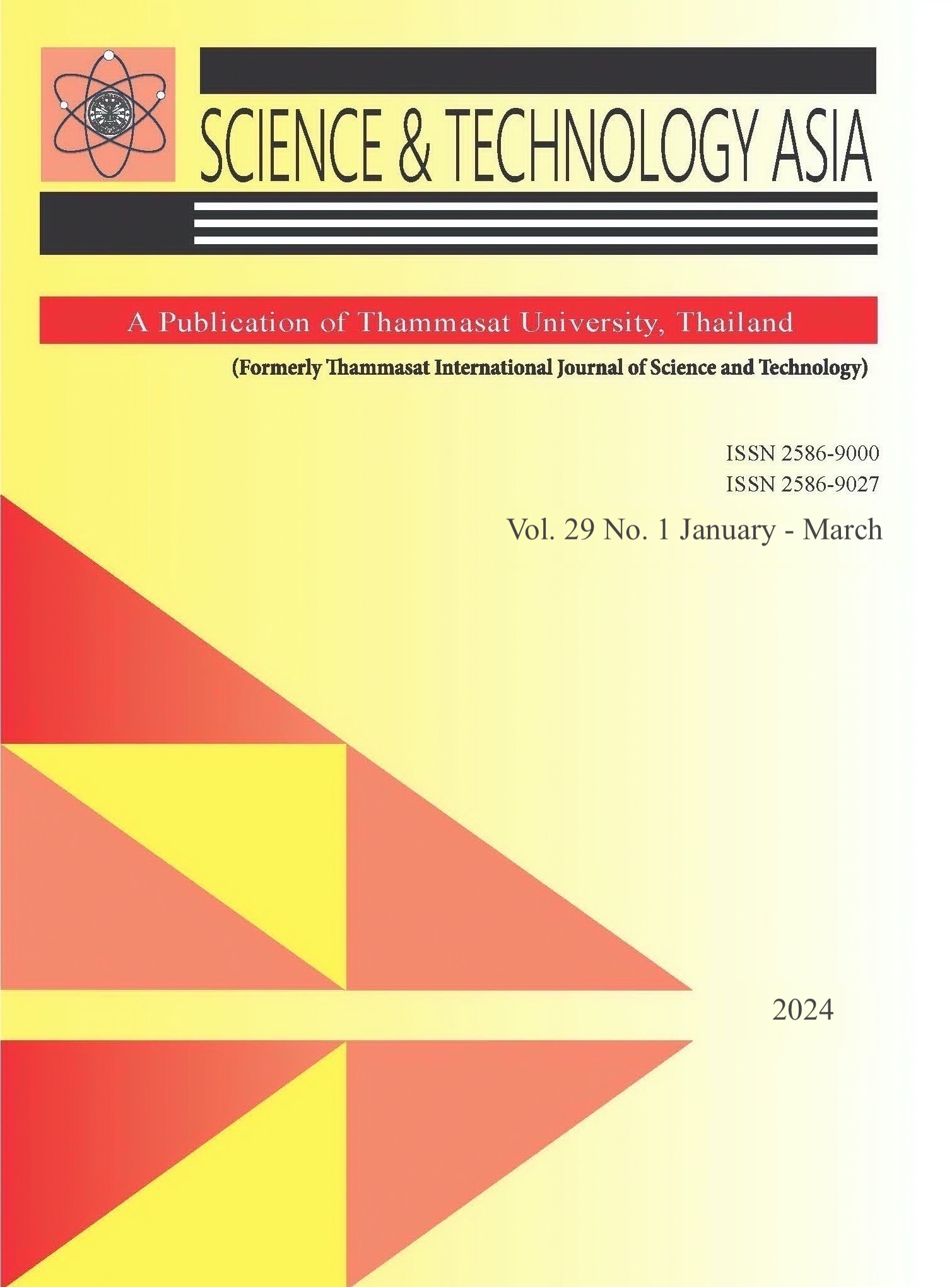Service Life of Reinforced Concrete Structural Members
Main Article Content
Abstract
Estimating the remaining service life of a structure is an essential part of bridge management systems (BMS). This involves investigating multiple deterioration mechanisms in concrete via chemical attacks due to chlorides, sulphates, acids, carbonation and other external effects. The influence of materials used in construction, exposure conditions, and maintenance history of the bridge are normally studied for estimating the remaining life. In the present case, an analytical study was performed to understand the deterioration in concrete due to carbonation. Carbonation occurs when carbon dioxide (CO2) enters into concrete through interconnected pores under humid environmental conditions. The effect of carbonation on the initiation time of corrosion in bridges can be determined based on IRC: SP 60-2002. In the current work, the effect of carbonation on different types of cement -Ordinary Portland Cement (OPC) (Type-1), OPC + fly ash (Type-2), OPC+ silica fume (Type-3), with varied grades (M20 to M50) and types of concrete of different dosage (air entrained and non-air entrained) and rate of carbonation is compared for (sheltered and non-sheltered) and structures with different exposure conditions. It was found that the effect of carbonation on service life is less in the presence of supplementary cementitious materials, while air-entrained concrete is less susceptible to the impact of carbonation than non-air-entrained concrete.
Article Details

This work is licensed under a Creative Commons Attribution-NonCommercial-NoDerivatives 4.0 International License.
References
Liu M, Frangopol D.M. Optimizing bridge network maintenance management under uncertainty with conflicting criteria: Life-cycle maintenance, failure, and user costs. Journal of structural Engineering. 2006; 132(11): 1835-45.
Hakim S.J.S, Razak H.A. Modal parameters based structural damage detection using artificial neural networks-a review. Smart Structures and Systems. 2014; 14(2): 159-89.
Frangopol D.M, Soliman M. Life-cycle of structural systems: recent achievements and future directions. Structure and infrastructure engineering. 2016; 12(1): 1-20.
Njardardottir H, McCabe B, Thomas M.D. Concrete bridge deck deterioration model using belief networks. Computers and Concrete. 2005; 2(6): 439-54.
Bocchini P, Saydam D, Frangopol D.M. Efficient, accurate, and simple Markov chain model for the life-cycle analysis of bridge groups. Structural Safety. 2013; 40: 51-64.
Abe M. Control system modeling of stock management for civil infrastructure. Smart Structures and Systems. 2015; 15(3): 609-25.
Indian railways annual report and accounts 2020-21.
Njardardottir H, McCabe B, Thomas M.D. Concrete bridge deck deterioration model using belief networks. Computers and Concrete. 2005; 2(6): 439-54.
Sianipar P.R, Adams T.M. Fault-tree model of bridge element deterioration due to interaction. Journal of Infrastructure Systems. 1997; 3(3): 103-10.
Folić R. Durability design of concrete structures, Part 1: Analysis fundamentals. Facta universitatis-series: Architecture and Civil Engineering. 2009; 7(1): 1-18.
Thomas M.D.A, Matthews J.D. Carbonation of fly ash concrete. Magazine of Concrete Research. 1992; 44(160): 217-28.
Gruyaert E, Van den Heede P, De Belie N. Carbonation of slag concrete: Effect of the cement replacement level and curing on the carbonation coefficient–Effect of carbonation on the pore structure. Cement and Concrete Composites. 2013; 35(1): 39-48.
Damtoft J.S, Lukasik J, Herfort D, Sorrentino D, Gartner E.M. Sustainable development and climate change initiatives. Cement and concrete research. 2008; 38(2): 115-27.
Parameswaran L, Kumar R. and Sahu G.K. Effect of carbonation on concrete bridge service life. Journal of bridge engineering. 2008; 13(1): 75-82.
Vu Q.H, Pham G, Chonier A, Brouard E, Rathnarajan S, Pillai R, Sarnot A. Impact of different climates on the resistance of concrete to natural carbonation. Construction and Building Materials. 2019; 216: 450-67.
Ekolu S.O. A review on effects of curing, sheltering, and CO2 concentration upon natural carbonation of concrete. Construction and Building Materials. 2016; 127: 306-20.
Puz G, Radic J. Life-cycle performance model based on homogeneous Markov processes. Structure and Infrastructure Engineering. 2011; 7(4): 285-96.
Saad T. and Fu C.C. Determining remaining strength capacity of deteriorating RC bridge substructures. Journal of Performance of Constructed Facilities. 2013; 29(5): 04014122.
Maekawa K, Ishida T, Kishi T. Multi-scale modelling of concrete performance. Journal of Advanced Concrete Technology. 2003; 1(2): 91-126.
Hallberg D, Racutanu G. Development of the Swedish bridge management system by introducing a LMS concept. Ma. 2007.
Ekolu S.O. Model for practical prediction of natural carbonation in reinforced concrete: Part 1-formulation. Cement and Concrete Composites. 2018; 86: 40-56.
Papadakis V.G. Service life prediction of a reinforced concrete bridge exposed to chloride induced deterioration. Advances in concrete construction. 2013; 1(3): 201.
Ghodoosi F, Bagchi A, Zayed T, Zaki A.R. Reliability-based condition assessment of a deteriorated concrete bridge. Structural Monitoring and Maintenance. 2014; 1(4): 357.
Fib Bulletin 34. (2006), Model Code for Service Life design of concrete structure. Lausanne: International federation for structural concrete (fib).
Fib Bulletin 59. (2011), Condition control and assessment of reinforced concrete structure exposed to corrosive environment (carbonation/chlorides). Lausanne: International federation for structural concrete (fib).
Fib Bulletin 76. (2015), Benchmarking of deemed-to- satisfy provisions in standards: Durability of reinforced concrete structures exposed to chlorides; Germany: DCC Document Competence Centre Siegmar Kastl e.K.
Bertolini L. Steel corrosion and service life of reinforced concrete structures. Structure and Infrastructure Engineering. 2008; 4(2): 123-37.
Indian Roads Congress (IRC). “An approach document for assessment of remaining life of concrete bridges.” IRC: SP-60, New Delhi, India. 2002.
Elsalamawy M, Mohamed A.R, Kamal E.M. The role of relative humidity and cement type on carbonation resistance of Concrete. Alexandria Engineering Journal. 2019; 58(4): 1257-64.
Häkkinen, T. (1993). Influence of high slag content on the basic mechanical properties and carbonation of concrete.
IRC:21-2000 standard specifications and code of practice for road bridges.
Tuutti K. (1982). Corrosion of steel in concrete, Swedish Cement and Concrete Research Institute, Stockholm.
IS 456-2000. (2000). Code of practice for plain and reinforced concrete. Bureau of Indian Standards, New Delhi.


